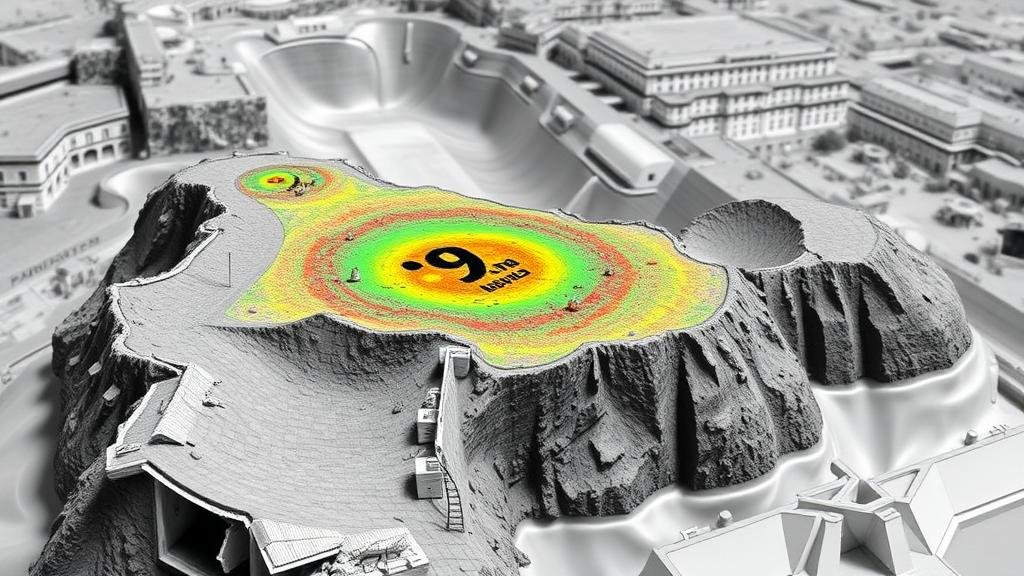Using Historical Earthquake Data to Identify Likely Artifact Displacement Zones
Using Historical Earthquake Data to Identify Likely Artifact Displacement Zones
Archaeological sites often harbor invaluable artifacts that provide insights into past cultures. But, natural disasters, particularly earthquakes, can significantly affect these sites, leading to the displacement of artifacts. Understanding how historical earthquake data relates to artifact displacement is crucial for archaeologists aiming to preserve cultural heritage. This article delves into the methodologies used to analyze historical data and how it informs the identification of likely artifact displacement zones (ADZs).
Understanding Earthquake Data
Historical earthquake data encompasses records of seismic events, including their magnitude, depth, and geographical impact. Agencies such as the United States Geological Survey (USGS) maintain comprehensive databases that catalog these occurrences. These records are instrumental for researchers as they provide empirical evidence of past seismic activity.
Key statistics to consider include:
- The frequency of earthquakes in a specific region.
- The magnitude of seismic events, which influences the potential for damage.
- Aftershock patterns following a major earthquake.
For example, the 1906 San Francisco earthquake, with a magnitude of 7.9, illustrates how intense seismic activity can lead to significant displacement of both buildings and artifacts. Historical archives of this event have been pivotal for both seismologists and archaeologists in understanding how future seismic events may affect unexcavated sites.
Identifying Artifact Displacement Zones
The identification of artifact displacement zones (ADZs) involves an interdisciplinary approach, integrating historical geology, archaeology, and seismology. By analyzing the locations of past earthquakes in conjunction with archaeological site distributions, researchers can pinpoint areas at greater risk for artifact displacement.
Through the application of Geographic Information Systems (GIS), archaeologists can layer earthquake data over maps of archaeological sites to visualize potential impacts. This spatial analysis reveals patterns and trends, facilitating more informed predictions about artifact displacement. For example, a site located near a known fault line may show a higher propensity for artifact movement due to ground shaking during seismic events.
Case Studies
Several case studies illustrate the practical applications of using historical earthquake data in archaeological contexts:
- Pompeii, Italy: The catastrophic eruption of Mount Vesuvius in 79 AD buried the city, but subsequent seismic activities have caused further displacement of artifacts. Archaeologists leverage both ancient records and modern seismic data to understand and mitigate ongoing risks.
- The Haiti Earthquake of 2010: Post-earthquake assessments revealed that many historical artifacts from the Port-au-Prince area had been displaced. Teams utilized pre-earthquake surveys to identify ADZs and plan recovery efforts for displaced artifacts.
Through these case studies, it becomes evident that historical earthquake data not only informs our understanding of seismic impacts but is essential for disaster preparedness in archaeology.
Implications for Archaeological Practice
Recognizing and mitigating risks associated with artifact displacement must be a priority for archaeologists, especially in seismically active regions. By employing historical earthquake data, archaeologists can:
- Develop risk assessment models that predict potential displacement zones based on previous seismic activity.
- Prioritize excavation efforts and conservation strategies in high-risk ADZs.
- Inform local policies relating to land use and heritage conservation.
Plus, the integration of educational outreach on the significance of seismic data can foster awareness within communities, encouraging collaborative preservation efforts.
Conclusion and Actionable Takeaways
Utilizing historical earthquake data to identify artifact displacement zones is a critical step in safeguarding cultural heritage from the impacts of seismic activity. By conducting thorough analyses and employing modern technologies, archaeologists can anticipate risks and implement proactive strategies for preservation.
Key takeaways include:
- Prioritize the review of historical earthquake records during archaeological planning.
- Engage with multidisciplinary teams to enhance risk assessment and conservation efforts.
- Use GIS and spatial analysis to visualize potential artifact displacement areas effectively.
In summary, a proactive approach centered on understanding and utilizing historical earthquake data can significantly enhance the protection of artifacts, ensuring that they continue to provide valuable insights into our past.



